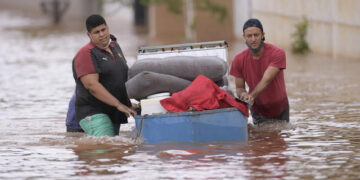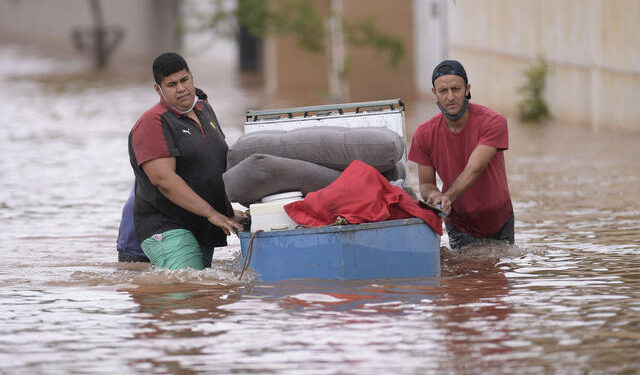By Ebi Kesiena
Torrential rain in the Brazilian State of Minas Gerais killed 10 people in two days, according to an official report on Tuesday, which warned of more intense downpours in the region.
The victims, among them an 11-year-old girl, died on Sunday and Monday due to rains, flooding, and landslides, according to the State Coordinator of Civil Defense.
Since the rains began at the beginning of October, 19 people have died in the southeastern Brazilian state. Ten more were killed on Saturday when a large rock fragment broke free of a ravine and plunged onto four tourist boats in Furnas Lake.
Current counts say 17,237 people have had to abandon their homes or seek refuge because of the storms.
The state’s Vice-Governor, Paulo Brant, in a video published on Instagram said that January has been very difficult due to the rains.
“January has been very difficult for Minas Gerais because of the quantity, and even more so the concentration, of rain in a short amount of time,”
“We should not curse the rain or blame nature. To a large extent the effects are due to past mistakes like the disorderly expansion of cities, and the sedimentation and pollution of rivers,” he said.
Civil Defense warned that conditions on Tuesday in Minas Gerais would include “moderate to heavy rain that may be accompanied by electric shocks.”
Experts attribute the emergency to the South Atlantic Convergence Zone (SACZ), a typical summer phenomenon that each year causes heavy rainfall in the area, in addition to La Niña — a climate pattern in the Pacific Ocean that can affect weather worldwide — and the climate crisis.
For two months, Brazil has suffered extensive damage due to the floods, which have killed dozens and displaced thousands, especially in the northeast state of Bahia.




































